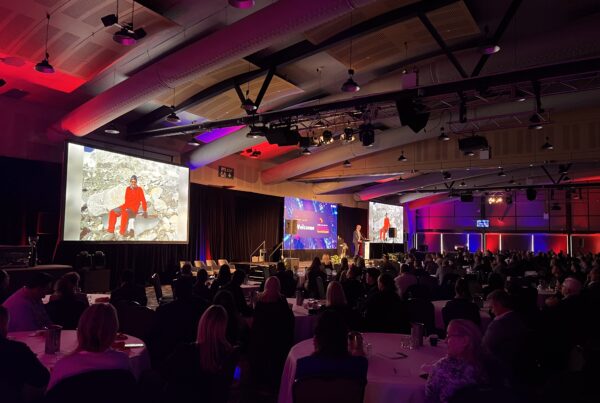2021 has been a busy year for government fleets. As a fleet strategy advisor, I have seen a cavalcade of different government entities seeking assistance to conduct fleet reviews.
Although the reasons vary as much as the types of organisations themselves, it seems Local Governments, in particular, are leading the way in taking on the challenges their motor vehicle fleets pose.
It is often assumed that management of corporate fleets is different from how fleets are managed within government organisations.
My article today is an attempt to analyse this assumption and share answers to some pertinent questions I am often asked:
- Do government organisations face the same challenges as enterprise businesses?
- What’s driving the demand for change within this sector? and
- Are there common solutions to address these challenges?
Fleet Management Challenges
Based on my observations while working with government organisations recently, it’s clear they face a lot of the same challenges in managing their fleet as businesses:
- Addressing vehicle under-utilisation
- Meeting Compliance obligations – including ‘Duty of Care’
- Minimising FBT liability
- Reducing Grey Fleet use
- Sustainability planning
Like most businesses, government entities are also called upon to justify and reduce costs. The need to maximise Fleet ROI is evident across industry, government and not for profit organisations alike.
For years, we have seen news of local councils facing debts and the appointment of administrators. While for those in NSW, the council amalgamations that commenced in 2016 brought new challenges and some legacy issues remain.
My local council took out the quinella here, moving from administration into self-government and subsequently amalgamating with two other councils.
While shareholders demand more from business, ratepayers and other stakeholders demand accountability from their government associations.
And then, of course, there are the impacts of COVID-19!
Increased Complexities
My recent fleet review projects have highlighted that some of these organisations have additional complexities to contend with.
Many have a huge array of assets they need to manage, not just motor vehicles. Even some of the smaller metropolitan and regional local governments organisations with small to medium-sized fleets have additional responsibilities of managing trucks, tractors, backhoes, trailers, mowers etc. This requires a broad range of skillsets and relevant procedures.
Given the need to cover large geographical areas, there are the challenges of gaining efficiencies across multiple sites/depots and aspects of de-centralisation to contend with.
Notably, my last project demonstrated that vehicle customisation presents further challenges, particularly for maximising fleet utilisation. This stems from the need to fit customised equipment to vehicles to meet specific needs, which result in the vehicle not being suitable for other applications. An example was a ute fitted with dog cages, preventing it from being used for many other applications, and the requirement for it be available 24/7 for its dog duties.
Embracing Solutions
Many government organisations were ‘early adopters’ with vehicle pooling as asset sharing was already common, and they understood the benefits of delivering fleet optimisation.
However, the technologies deployed to manage the movement of their assets have not always been ‘cutting edge’ – whiteboards are sometimes still being used to record bookings, along with Outlook and the occasional clipboard with a paper log.
In several cases, different systems and tools were deployed to help manage various aspects of their operations, creating ‘information silos’, leading to frustrations stemming from the need to manage multiple databases and compilation of data from several sources to derive any meaningful insights that can support the decision-making processes.
However, the silver lining is that the need for good data to support informed decision making and less reliance on ‘gut feel’ is prevailing.
Governments are realising the benefit of introducing a holistic fleet management solution to track and manage different fleet operations like utilisation, optimisation, compliance, vehicle maintenance and carpooling. A single system equipped to provide standard metrics and insights on fleet usage, availability, idle time, kilometres travelled, FBT reporting, vehicle servicing and carpooling automation etc.
The value of measuring and reporting this key data is gradually taking precedence.
Solutions that provide insights into vehicle utilisation through the quantity and quality of data available are being sought by Local Governments.
Deploying Technology
Local Governments are now leading the way in the transition to Battery Electric Vehicles (BEVs) as a key to their sustainability policies. Most have a strong commitment to protecting the environment and are focused on minimising their carbon footprint.
It is interesting to see how this impacts government organisations’ willingness to switch to a cost-effective fleet management solution that can help them manage their hybrid fleets. They are particularly interested in a technologically advanced solution that can scale and meet EV specific requirements, like tracking the vehicle’s state of charge, analysis of active driving times, usage patterns, and driver behaviour to enable the successful deployment of electric vehicles in their carpools.
Facilitating a ‘vehicles on demand’ approach while meeting compliance requirements appears to be the mantra of those government organisations that are delivering optimal fleet ROI.
Paul Oliver is the Director & Principal Consultant of Fleet Advisory. He provides independent expert advice and consulting services relating to fleet and mobility solutions. This article was first published by Intelematics and has been republished with permission.






